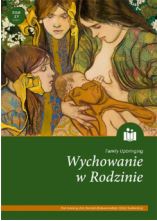Korelacja pomiędzy relacjami rodziców z dziećmi i poziomami empatii
u młodocianych w wieku 14–16 lat
Correlation between parents – children relationship
and empathy levels in 14–16 years old adolescences
Author(s): Lyudmila KALINNIKOVA, Elena SHAPLAVSKA, Kristina SKADMANESubject(s): History, Social Sciences, Education, Sociology, Social history
Published by: Zakład Historii Edukacji w Instytucie Pedagogiki Uniwersytetu Wrocławskiego
Keywords: empathy; parents-children relationships; channels of empathy; socially desirable behaviour; acceptance
Summary/Abstract: The research aims to explore the correlation between the parents-children relationships and empathy levels in the adolescence period. In the theoretical part, definitions,implemented research methods and results of previous research were analysed and evaluated. Study objectives were the theoretical analysis of the current understanding of the empathy issues and parents – children relationships, as well as empirical explorationof links between empathy and parenting styles. Based on the previous research, we hypothesized that there is a link between parents-children relationships and empathylevels in the adolescence period. 90 adolescents and their parents participated in thestudy; the median age for the group of adolescents was Me = 15 years, for the group of parents Me = 37. Implemented study methods: Parental Attitude Questionnaire1 and Empathy Capacity Diagnostics test2. A computer program SPSS 20.0 was implemented for data processing. According to the obtained data, a significant proportion of adolescents (58.0%) have low levels of empathy. The results of this research revealed two weak positivecorrelations between parents-children relationships and empathy levels in the adolescence period: a correlation between the level of Acceptance and the level of a Rational empathy channel (r = 0.237, n = 90, p < 0.05) and a correlation between the level of a Socially desirable behaviour and the level of an Identification channel (r = 0.270,n = 90, p < 0.05). The hypothesis of the study was partially confirmed.
Journal: Wychowanie w Rodzinie
- Issue Year: XV/2017
- Issue No: 1
- Page Range: 155-163
- Page Count: 9
- Language: English, Polish

